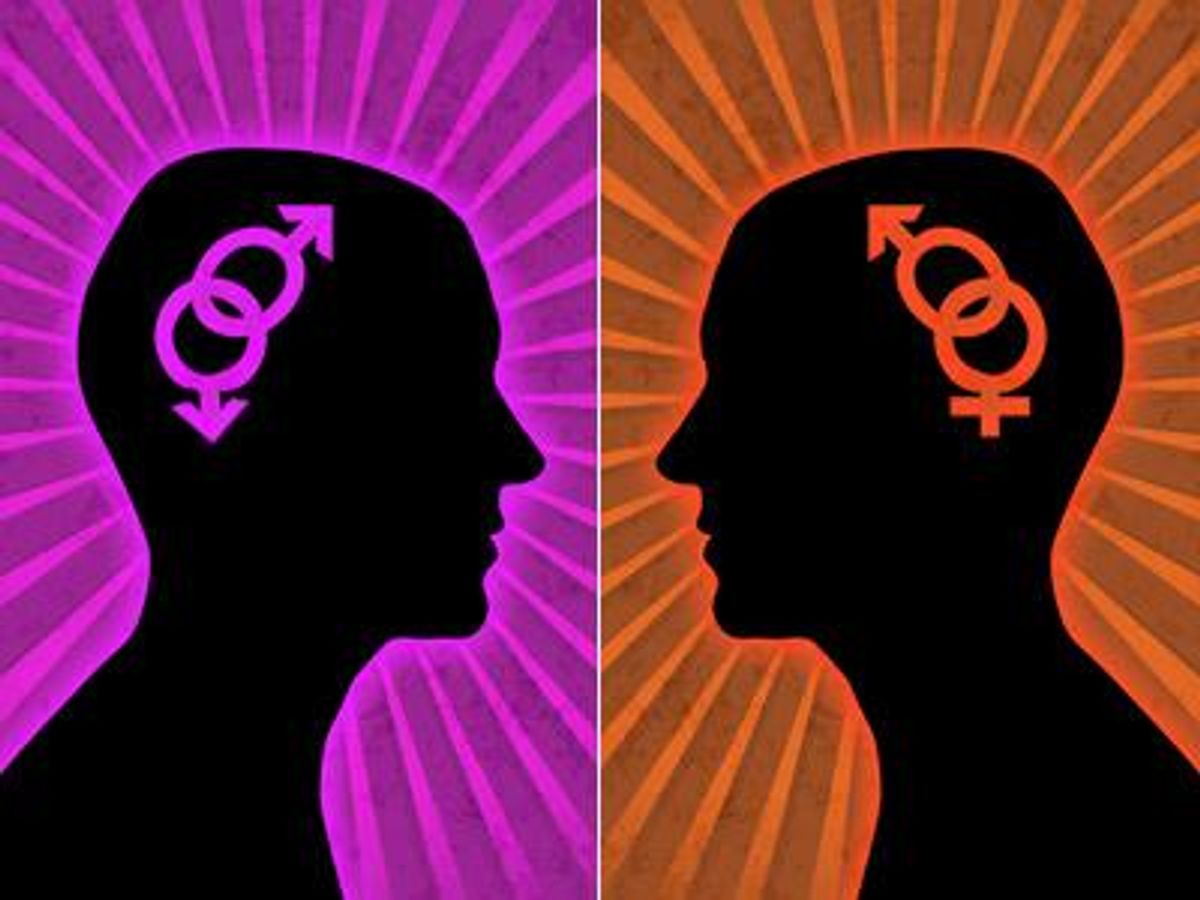A Northern California author says he's discovered the missing link that explains the biological source of sexual orientation. While doing research for his recent book, The Whole-Brain Path to Peace, James Olson stumbled upon what he says is the direct correlation between hemispheric dominance in the brain and whether a person is gay or straight.
Olson's theory portends that both heterosexual men and lesbians are generally dominated by the left hemisphere of the brain, which is committed to sequential, thought-oriented processes. And heterosexual women and gay men are much more likely to be dominated by the right hemisphere of the brain, which regulates feeling and cultural awareness.
Olson believes that current research looking for a "gay gene" is searching in the wrong place. Rather, Olson contends, sexual orientation is determined by brain hemisphere dominance. Most men are left-brain dominant, whereas most women are right-brain dominant. Seizing on the implication that "most" necessarily excludes some people, Olson wondered what happened when brain dominance was reversed from the standard.
After reviewing a large collection of scientific literature, Olson hypothesized that when a man is right-brain dominant or a woman is left-brain dominant, that person will be gay or lesbian.
"I think that probably a hormone or a gene is responsible for the brain-dominance [pattern]," said Olson in an exclusive interview with The Advocate. "That [reversed brain dominance] is what causes homosexuality."
If sexual orientation is determined by brain dominance as Olson contends, it's important to note that the pathways connecting the two hemispheres of the brain and determining which side is dominant are mostly finalized before birth. As such, Olson reiterates conventional scientific wisdom that sexual orientation is predetermined and unchangeable. The author, a straight, single man originally from Oklahoma, also believes that his observation could help demystify the source of sexual orientation and thereby foster peace and understanding.
"We fear what we don't understand," said Olson, who holds a business degree from the University of Oklahoma. "I'm looking for peace and an end to this war against gay people. The answer is education -- if people understand what's going on, then the fear disappears."
Olson says he culled numerous peer-reviewed articles about the hemispheric preference -- and corresponding behavior -- of straight, gay, and bisexual men and women. One important study Olson cites comes from the Karolinska Institute in Stockholm, Sweden, which found that scans of gay people's brains most closely resembled -- in structure and composition -- those of heterosexual people of the opposite sex. Essentially, the 2008 study posited that a lesbian's brain closely mirrored the structure of a straight man's brain, while a gay man's brain was most similar in structure to a straight woman's.
Ultimately, Olson may have found the scientific explanation to what many consider to be common colloquial knowledge about traditional gender roles and queer sexuality. Olson's theory provides a physiological basis for the idea that men are more aggressive and logical, whereas women are more compassionate and emotional.
Brain dominance, Olson contends, regulates more than just sexuality -- it also controls perception of the world, which heavily influences perspective. Olson explained that right and left-brain processes and functions are nearly identical in all brains, regardless of race, gender, or sexual orientation. Given that, he said, one could understand how a male perceiving the world through a right-brain dominant lens -- like the one used by most heterosexual women -- would share a similar perspective with that straight woman. This is the case with gay men and lesbians, he said, whose brains closely resemble the brains of straight people of the opposite sex.
The author, who considers himself an integral philosopher, says his theory can predict the sexual orientation of a person according to his or her hemispheric brain dominance with a 95% accuracy rate. Tests to discover one's own hemispherical dominance are available online, and free to the public on Olson's website.
Olson is quick to highlight the great amount of diversity among humans and readily admits that his theory is not proscriptive for the entire spectrum of human sexuality. He hypothesizes that people whose desires don't fit into a binary model, such as bisexual, pansexual, and genderqueer folks, may engage both hemispheres of their brains on a more regular basis, though he currently lacks supporting research. Less research exists on transgender identities, bisexuality, and other non-binary sexual attraction, so Olson says his conclusions aren't expected to extend to every segment of the LGBT spectrum.
Nevertheless, Olson's supporters say his common-sense conclusions may be our next best hope at understanding the origins of sexual orientation and proving that LGBT people are not mentally ill, making a lifestyle choice, or in need of a cure.
Olson's book, The Whole-Brain Path to Peace, has received four national book awards and required a broad range of research to complete. This brain-dominance theory, and the paper which presents it, is his first effort to synthesize scientific information, and Olson believes it is the first to discover the connection between brain hemisphere dominance and sexual orientation.


















































































Viral post saying Republicans 'have two daddies now' has MAGA hot and bothered